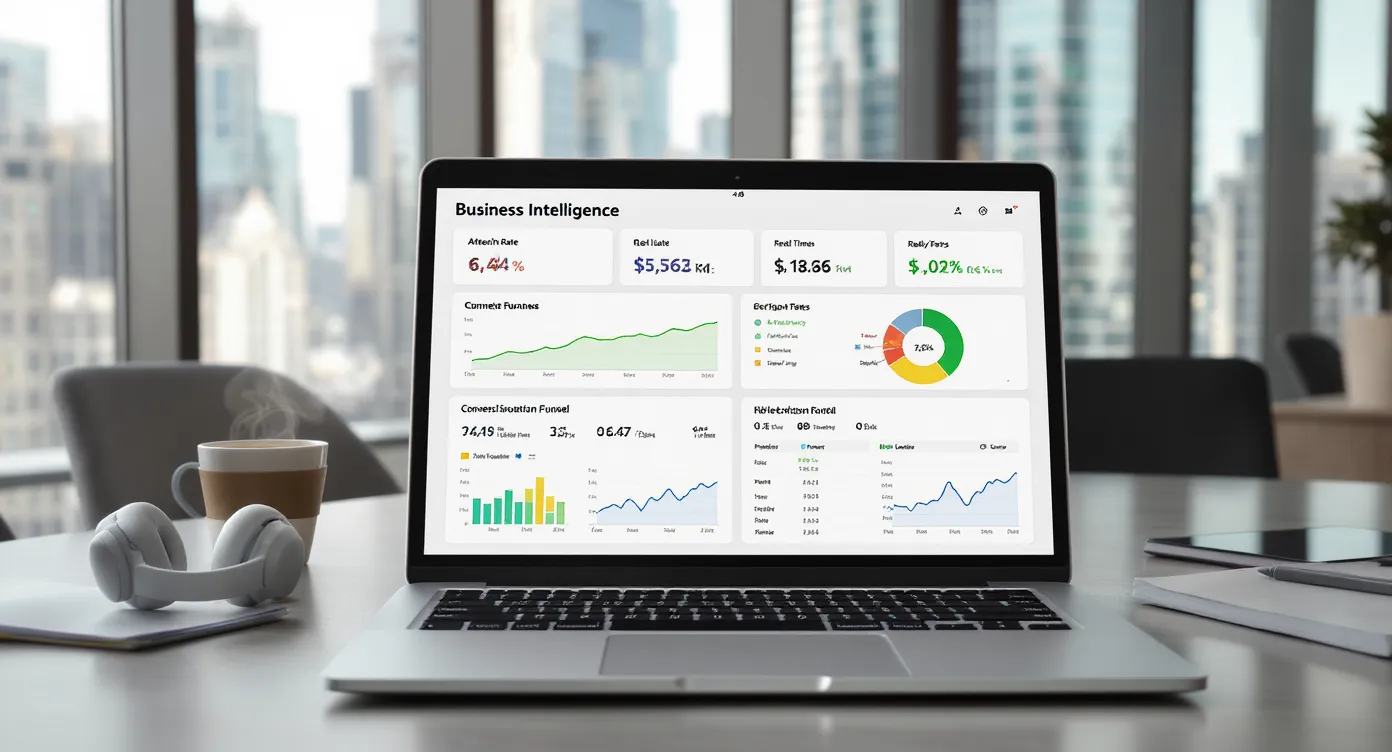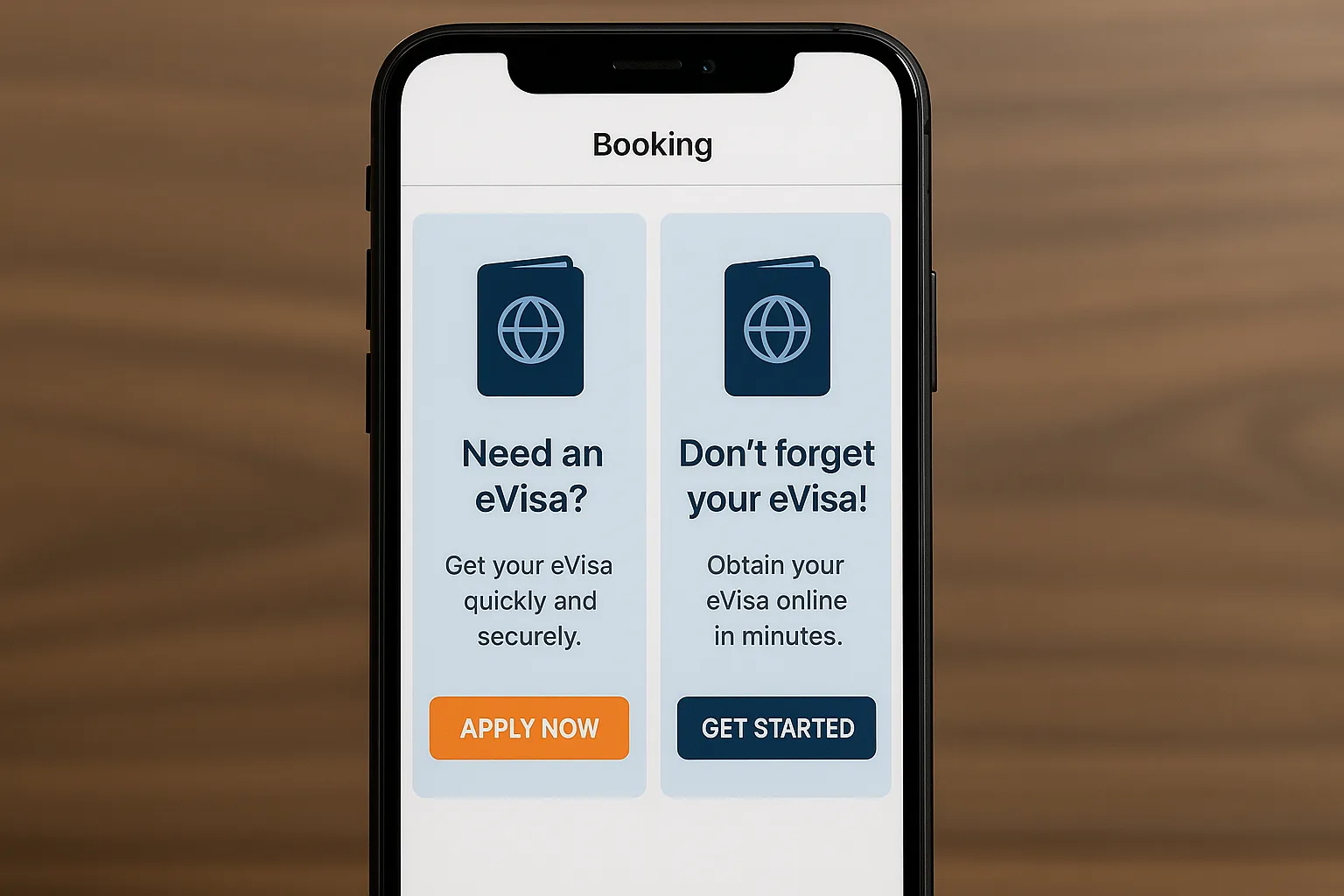How to Measure Ancillary Revenue from eVisa Sales: Attribution, UTM Setup, and BI Tips

Measuring the actual dollars your brand earns from selling eVisas can feel like trying to grab fog—especially when customers click between booking engines, email reminders, mobile apps, and partner portals before completing their application. Yet without clear attribution, finance teams will question the value of the add-on, product owners cannot prioritise experiments, and commercial leaders may under-invest in a fast-growing ancillary category.
In this guide you will learn a repeatable framework to capture, attribute, and report eVisa revenue so you can prove ROI and unlock bigger budgets. It covers three pillars:
- UTM architecture that survives every hand-off.
- Conversion tracking and post-booking attribution logic.
- Business-intelligence (BI) dashboards and KPIs revenue teams actually use.
Along the way we reference best practices from SimpleVisa partners handling millions of monthly sessions and link to free templates you can copy today.
1. Start with a Robust UTM Strategy
Most eVisa sales originate from two moments in the traveller journey:
- In-flow prompts during flight, hotel, or package checkout.
- Post-booking nudges (emails, SMS, push notifications, itinerary pages).
Each touchpoint should carry a consistent campaign taxonomy so analytics platforms can stitch the trail together. Below is the starting structure we recommend for Google Analytics 4, Adobe, Mixpanel, or any other tool that supports UTM-style parameters.
| Parameter | Recommended Value | Purpose |
|---|---|---|
| utm_source | simplevisa | Identifies SimpleVisa as the fulfilment provider. |
| utm_medium | checkout, email, sms, push, app, cx | Classifies the channel or UI surface. |
| utm_campaign | evisa_upsell, visa_reminder, eta_deadline, sandbox_test | Groups related experiments or lifecycle flows. |
| utm_term | cabin_class_Y, loyalty_tier_gold, departure_14d | Stores traveller attribute or segmentation logic. |
| utm_content | banner_1, widget_dynamic, link_footer | Distinguishes creative variants. |
Five setup tips that avoid headaches later:
- Keep keys lowercase and snake-case to reduce typo variants.
- Never store PII (personal email, passport number) inside UTMs; use anonymous IDs and pass the PII server-to-server via the SimpleVisa API if needed.
- Regenerate UTMs on each booking ID so a customer who clicks multiple reminders does not overwrite the original session.
- Log the same UTM set in your order management or PNR—reconciliation becomes trivial.
- Guard against stripping: some email and meta-search platforms chop UTM strings; wrap them in redirect links or encode where necessary.
Example Checkout Embed Code
<script src="https://simplevisa.com/widget.js"
data-partner-id="YOUR_ID"
data-utm-source="simplevisa"
data-utm-medium="checkout"
data-utm-campaign="evisa_upsell"
data-utm-term="cabin_class_Y"
data-utm-content="widget_dynamic">
</script>
2. Map the Full Conversion Journey
A traveller may start on your site, continue the visa form on SimpleVisa’s hosted page, pay on a third-party PSP, and finally download the approved PDF days later. To attribute revenue back to your marketing touchpoints you need two IDs:
- Partner Transaction ID (e.g., booking reference, order ID, or cruise manifest number)
- Visa Application ID generated by SimpleVisa
When you initialise the widget or API call, pass the transaction ID inside the metadata object. SimpleVisa echoes it in all webhook events—application_submitted, payment_captured, visa_granted, visa_refused. Your system therefore receives a real-time revenue signal with the original UTMs attached.
Recommended Attribution Logic
- Direct attach: If the application is completed within the same web session as the booking, credit the sale to the checkout channel.
- Assisted attach: If completed via post-booking comms within 30 days, attribute to the last engaged channel (email, SMS, push) using last-click or position-based modelling.
- Organic attach: If the traveller lands directly on SimpleVisa without a tracked link but we can match the booking ID, allocate revenue to “organic/simplevisa” to avoid unattributed buckets.
BI teams often enrich this with predictive attribution models, but these three rules cover 95 % of edge cases and satisfy finance audits.
3. Build a Revenue Dashboard Stakeholders Trust
Even the sharpest attribution model is useless if outputs hide in a spreadsheet that nobody opens. High-performing partners surface eVisa KPIs alongside flights, bags, seats, and insurance so executives see the full ancillary picture.
Core Metrics to Track
| KPI | Definition | Why It Matters | Suggested Visual |
|---|---|---|---|
| Attach Rate | Percentage of bookings that at least start an eVisa application. | Indicates top-funnel interest; proxy for marketing placement quality. | Line chart with benchmark range. |
| Paid Conversion Rate | Applications that reach payment ÷ applications started. | Measures friction inside the form. | Funnel plot or stacked bar. |
| Ancillary Revenue per Booking (ARPB) | Net eVisa revenue ÷ total bookings. | Primary commercial KPI for P&L. | Heat map by origin/destination. |
| Average Order Value | Mean eVisa basket size (visa fee + service fee). | Helps optimise pricing and upsell bundles. | Histogram with dynamic segments. |
| Approval Rate | Granted visas ÷ applications submitted. | Affects customer satisfaction and refund exposure. | Gauge with SLA thresholds. |
A best-practice BI stack looks like this:
- Data capture: Webhooks from SimpleVisa stream into an event queue (e.g., Segment, AWS Kinesis).
- Storage & modelling: Events land in a cloud warehouse (BigQuery, Snowflake) where dbt models transform raw JSON into dimensional tables.
- Visualisation: Dashboards in Looker, Power BI, Tableau, or Metabase read from these tables and update every hour.
- Alerting: Slack or Teams alerts trigger when conversion or approval rates drop below thresholds.

Sample SQL Snippet (BigQuery)
SELECT
b.booking_date,
b.route_origin AS origin,
b.route_destination AS destination,
COUNT(DISTINCT v.application_id) AS applications,
SUM(v.net_revenue_usd) AS visa_revenue,
COUNT(DISTINCT b.booking_id) AS bookings,
SAFE_DIVIDE(SUM(v.net_revenue_usd), COUNT(DISTINCT b.booking_id)) AS arpb
FROM `warehouse.bookings` b
LEFT JOIN `warehouse.visa_applications` v
ON b.booking_id = v.partner_booking_id
WHERE booking_date BETWEEN DATE_SUB(CURRENT_DATE(), INTERVAL 30 DAY) AND CURRENT_DATE()
GROUP BY 1,2,3
ORDER BY visa_revenue DESC;
Feel free to adapt the field names to match your schema—our open-source dbt package covers most of this already.
4. Closing the Attribution Gaps
Even with perfect UTM discipline you will encounter broken journeys. Below are common pitfalls and quick fixes.
| Problem | Symptom | Fix |
|---|---|---|
| Email client strips tracking params | High opens but zero attributed revenue | Use branded short links with redirect and append UTMs server-side. |
| Travellers switch devices | Session starts on desktop, finishes on mobile; revenue shows as “direct” | Embed booking ID in the visa link so SimpleVisa can re-attach server-side. |
| Local privacy blockers | Safari ITP, Firefox ETP kill third-party cookies | Rely on server-to-server events and first-party cookies, not pixels. |
| Group bookings | Lead pax shares link; UTM term no longer reflects cabin class of each member | Pass passenger-level metadata array via the widget config or API. |
5. Benchmarking and Experimentation
SimpleVisa’s network average in 2025 shows:
- Attach rate: 7.6 %
- Paid conversion: 58 %
- ARPB: US$6.12
If your numbers are below, start by A/B testing:
- Placement: Above-the-fold widget vs modal after payment.
- Copy: Compliance framing (“Required for entry”) vs convenience framing (“Skip embassy queues”).
- Pricing: Flat fee vs bundled in trip protection package.
Use the UTMs’ utm_content field to tag each variant and analyse lift in the same dashboard.

6. Security, Privacy, and Finance Reconciliation
Remember that ancillary revenue appears on two ledgers:
- Gateway settlements: SimpleVisa collects payment from the traveller.
- Revenue share payouts: SimpleVisa remits your share monthly.
Finance teams will reconcile line items by Application ID. Export a monthly CSV or pull via the /reports/payouts endpoint. Compare to accounting software or PSP reports; discrepancies usually trace back to chargebacks or currency conversions.
GDPR and PCI compliance rules prohibit passing card tokens or passport scans inside UTMs or analytics events. Store sensitive data in SimpleVisa’s encrypted vault and reference by tokenised IDs only.
Internal Resources and Further Reading
- Ancillary Revenue Explained: Turning Compliance Into Profit
- 5 KPIs to Track After Deploying a Visa Management Platform
- Which Regions Generate the Highest eVisa Upsell Rates? New Research
- Ultimate Guide to Marketing eVisa Services During the Booking Flow
Frequently Asked Questions
How long does it take to implement the UTM and webhook setup? Most partners complete technical setup in 1–3 developer days using our sandbox and copy-paste snippets.
Can I track revenue in Google Analytics 4 without a data warehouse? Yes. Push the visa_revenue value as an ecommerce_purchase event with a custom dimension for Application ID, then build Explore reports.
What if a visa is refused and we refund the traveller? Webhook visa_refused includes net_revenue_usd = 0 and a refund=true flag. Your BI model should subtract this amount in ARPB calculations.
Does SimpleVisa support server-side GTM? Absolutely. Load the widget in your server container, forward UTMs, and receive conversion signals via our secure Measurement Protocol endpoint.
Prove the Value, Unlock the Budget
Modern travel brands already capture millions in new profit from digital border-crossing solutions. The difference between a pilot that fizzles and a program that scales is measurement rigor. Follow the blueprint above and you will move eVisa revenue from “nice extra” to a forecastable line on the P&L.
Want a personalised walkthrough of dashboards, webhooks, and payout reporting? Book a 20-minute demo with a SimpleVisa solutions engineer today and start turning compliance into measurable profit.